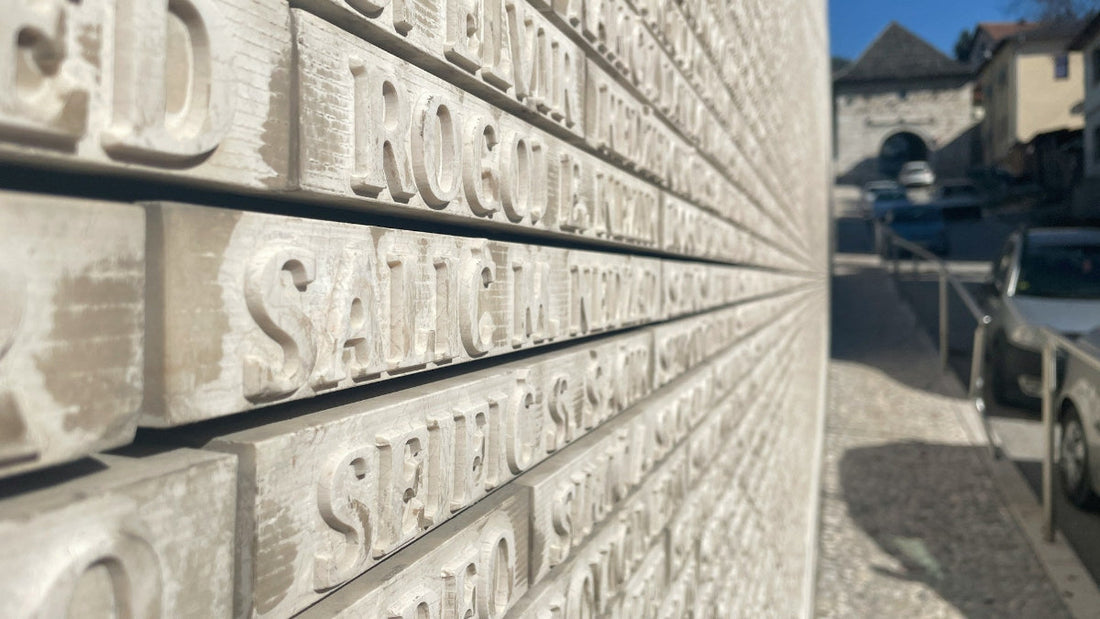In our last blog, we explored how names in literature are an important key to meaning. In this entry, we consider how everything else in a story—every object, person, and action—can also carry meaning well beyond its function to advance the plot. “Three people flee from a burning city”? Or “Out of the ignominious flames emerge the past, present, and the future of Rome”? We read in the opening scene of Virgil’s Aeneid that the hero Aeneas carries his father Anchises on his back while his son Ascanius walks in front as together the three leave Troy in its final moments. But which meaning is available to us depends on whether we can read literary symbols or not.
You say we all read literature in the language in which it is written, so don’t we all have the same meanings available? Yet literature is a kind of language that operates on top of our language—a language that utilizes the literal resources of the home language and turns them in interesting and creative ways so that the symbolic language carries a greater significance than it normally does in colloquial speech. Whether you call it a language of its own or a special use of language, the literary language in Virgil’s symbolic moment opens us to more profound meanings than we thought possible.
Literary language in this case extends our language to become a vehicle of a greater yet subtler meaning. This subtlety and literariness of the symbolic moment makes us work as readers to draw out its meaning. Yet when we ponder and reflect to access that greater significance, how satisfying it is we discovered it. Consider the following diagram that readers face in literary contexts:
Theme
Action
Those who read literature at the bottom level only as if it were the mere newspaper report of action miss the story’s rich themes, which the action supports. As important as the who, what, where, and how are, the why hanging over the entire tale purports to us this realm of meaning which makes the literature weightier, more deeply satisfying. The whole story and its every part can carry this greater meaning.
Similarly, some people watch movies only for the action—at this bottom level—that is, merely to follow an interesting or exciting sequence of events. But if we would get the most from our cinema, or literature, or any other art, we must open our eyes to this higher meaning of symbols and what they say about the theme of the work, lest we miss the point of the art altogether. In other words, the action is only part of the work the creators of these art forms offer us.
The classic example of the symbol in film is Citizen Kane. This celebrated movie opens with the image of Charles Foster Kane sick in bed as he utters his last word before dying. The rest of the movie explores the symbolism of the last word he speaks—“Rosebud”—and hence sheds light on the meaning of his life and the theme of the movie. In a way, the film teaches its audience the art of the symbol and perhaps is so beloved because of how effectively—and affectingly—it helps us mine that answer out of the vast quarry of a man’s life.
Movies are filled with symbols like this. Besides this overarching one, a host of familiar symbols carry meaning throughout the films we watch, whether we realize it or not. Consider several simple examples: the boiling kettle on the stove symbolizing rising tension, the falling rain on the windowpane symbolizing falling sadness, and the mirror in which the character gazes symbolizing probing self-examination. The point is that in symbolism, every object, character, and action can carry greater significance. Notice, however, that the same object can symbolize different meanings in different contexts or for different authors. The waters cascading like tears down a windowpane can when poured over the head symbolize cleansing and renewal. We must make ourselves aware of the rich possibilities that surround every part of a story and what it is doing there to get to the symbolism. All those objects, characters, and actions that function as symbols carry the greater story, which the lesser story of the moving parts set into motion.
Literature has long been operating through the power of symbols. We think of Homer’s shield of Achilles in The Iliad with its two cities betokening war and peace, Melville’s white whale in Moby Dick embodying that greater force Ahab can never master, and the dock light in Fitzgerald’s The Great Gatsby representing human hope or some ironic twist on it. Literary examples can be compounded without end across the history of letters. Children’s books also use symbols, though the symbols might be closer to the surface and more accessible. Gary Paulsen’s classic novel Hatchet features the young protagonist stranded in Northern Canada with little more than the tool of the book’s title that—combined with his fortitude and sharp wits—helps him face the wilderness and become a man. In C. S. Lewis’s The Voyage of the Dawn Treader, a beastly Eustace Scrubb wakes up as a dragon whose outer skin Aslan cuts away with a painful yet surgical claw to make him a boy again. The Bible extends literary symbolism across its pages as well. The symbolic way of expression is seen not only throughout its language, but also through its sacred rites, divine architecture, and even prescribed actions. Cleansing and sprinkling of blood carry meaning through rituals, palm trees and angel wings do the same in adorning temples, and fasting and feasting likewise mark its many holidays. The profusion of symbolism in the Bible is almost like that phrase that describes God’s voice as “the sound of many waters.” The abundance of meaning flowing through its pages washes over objects, people, and events near and far, ultimately anointing both divine creation and human culture. Abounding meaning like this gives weight to the statement that “The heavens declare the glory of God” and that “creation speaks forth his handiwork.”
Some might ask, how do we know we are in the presence of symbolism? For surely not every detail in writings sacred or secular necessarily carries symbolic meaning. If sometimes a staircase is just a staircase, then how do we know? We should look for those places when the verbal and visual carry more significance than functioning as moving parts only. In particular, we look for 1.) prominence of place, 2.) repetition, and 3.) resonance. In the first place, literary artists often feature their most important symbols in titles, in story openings and closings, and in suggestive overtones as characters take stock of moments of significance around them. In the second place, we look for repetition in literary contexts. If a motif is something repeated that gathers significance as it moves toward symbolism, then the “bean motif” in Thoreau’s Walden begins as a practical experiment in sustenance farming, but then by repetition and reflection his bean field grows into a grand symbol of his independence and close connection to the land. In the third place, we look for resonance. Just as the cello string or organ pipe reverberates to give us its lovely music, so literary symbols sound their lingering notes and deliver extra-order harmonics that similarly stay in the mind. These extra meanings both delight and challenge us as they carry their greater suggestions deeper into our imagination.
Consider a final example in this passage from Ray Bradbury’s Fahrenheit 451. While his wife watches a state-sanctioned broadcast on their authorized electronics, Montage reaches for a forbidden book he has hidden from the censors. An avalanche of books falls from their hiding place:
Books bombarded his shoulder, his arms, his upturned face. A book lit, almost obediently, like a white pigeon, in his hands, wings fluttering. In the dim, wavering light, a page hung open and it was like a snowy feather, the words delicately painted thereon. In all the rush and fervor, Montage had only an instant to read a line, but it blazed in his mind for the next minute as if stamped there with fiery steel. “Time has fallen asleep in the afternoon sunshine.” He dropped the book. Immediately, another fell into his arms.
What symbols operate in Bradbury’s well-orchestrated passage? Again, to a reader looking only for action, hidden books fall on Montage, nothing more. But at the symbolic level, the passage opens up. The descriptions of bird and feather are no mere verbal decoration. They are the very symbols of freedom that these books present to Montage. It is as if he they say to him, “Might your soul soar with the birds in the freedom you crave in your repressed society.” Notice, too, the symbol in the line from the book that “blaze[s] in his mind.” This is no throwaway line that one might read at random. At the symbolic level, the line is nothing less than a truth now burning on the inside. The words say to Montag, “Your act of reading defeats time in the light of an ever-present now.” And so Bradbury fashions these exquisite symbols of the power of reading that contrast with the burning of books in the tale. Better to shine in the sunlight of this momentary fullness than be consumed in the censors’ fires. Bradbury encourages us all to pick up our books (or indeed have them fall in our hands) and enter their greater world of freedom.
This primer is meant to introduce you to literary symbols. Now that you know how they work, practice looking for them. In time, you will become a natural reader of symbols. Everyone loves a good treasure hunt, so think of symbols as the hidden treasure in great works. Don’t miss how symbols would open your mind to their greater world of meaning and delight. Think about how impoverished we would be without the expansive horizon that books and their symbols open to us. Is reading while ignoring the symbols like watching black and white instead of color television, back in the day? Is it like watching movies with the sound turned off, in our own? Perhaps it is simply living in a spiritual flatland when a fully dimensioned world surrounds us on every side but remains just out of sight.
Photo courtesy of Florian K.




